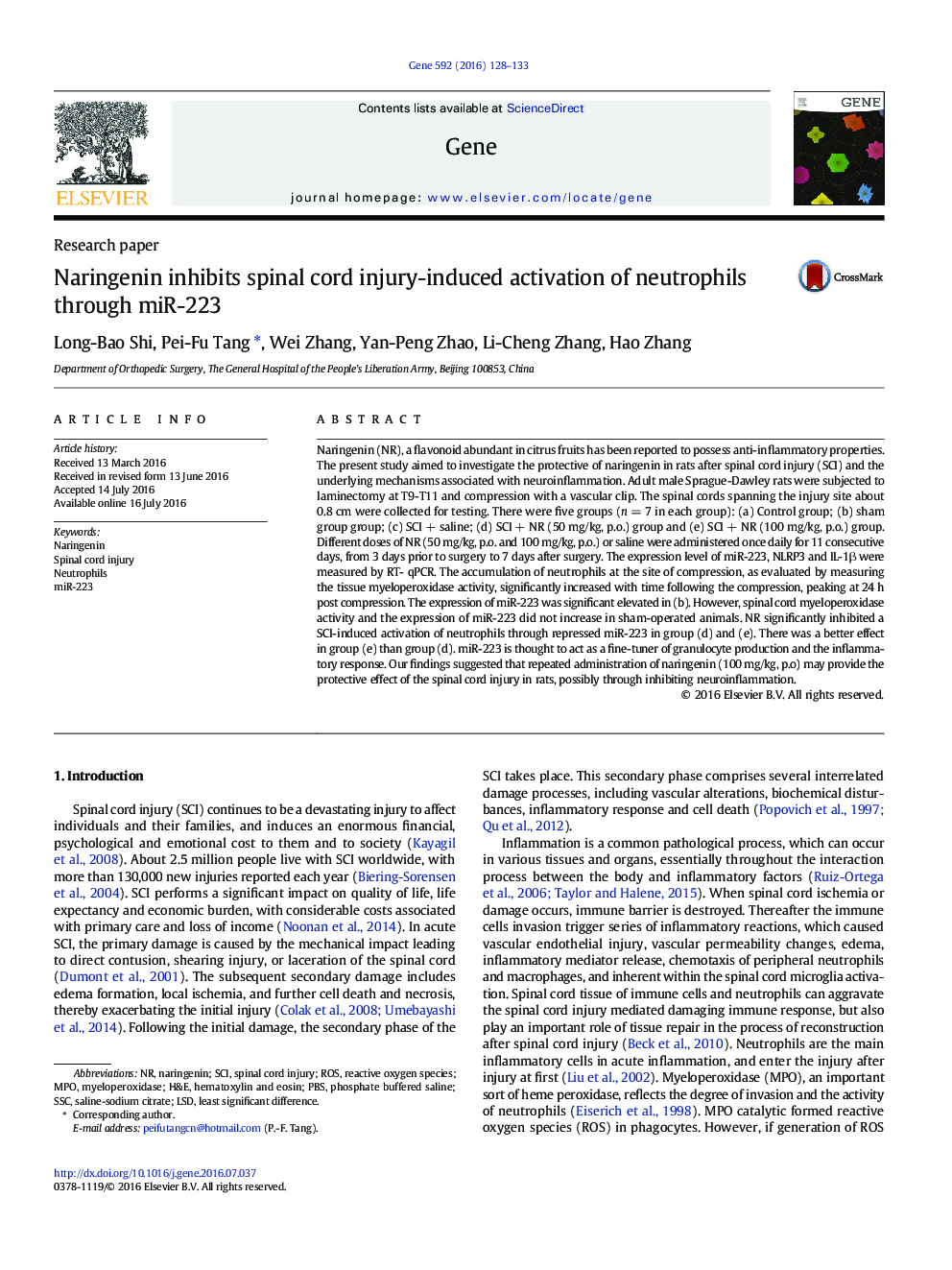| Article ID | Journal | Published Year | Pages | File Type |
|---|---|---|---|---|
| 5905091 | Gene | 2016 | 6 Pages |
â¢miR-223 promoted the neutrophil-mediated inflammation following SCI.â¢Naringenin significantly inhibited a SCI-induced activation of neutrophils through repressed miR-223.â¢miR-223 is thought to act as a fine-tuner of granulocyte production and the inflammatory response.
Naringenin (NR), a flavonoid abundant in citrus fruits has been reported to possess anti-inflammatory properties. The present study aimed to investigate the protective of naringenin in rats after spinal cord injury (SCI) and the underlying mechanisms associated with neuroinflammation. Adult male Sprague-Dawley rats were subjected to laminectomy at T9-T11 and compression with a vascular clip. The spinal cords spanning the injury site about 0.8 cm were collected for testing. There were five groups (n = 7 in each group): (a) Control group; (b) sham group group; (c) SCI + saline; (d) SCI + NR (50 mg/kg, p.o.) group and (e) SCI + NR (100 mg/kg, p.o.) group. Different doses of NR (50 mg/kg, p.o. and 100 mg/kg, p.o.) or saline were administered once daily for 11 consecutive days, from 3 days prior to surgery to 7 days after surgery. The expression level of miR-223, NLRP3 and IL-1β were measured by RT- qPCR. The accumulation of neutrophils at the site of compression, as evaluated by measuring the tissue myeloperoxidase activity, significantly increased with time following the compression, peaking at 24 h post compression. The expression of miR-223 was significant elevated in (b). However, spinal cord myeloperoxidase activity and the expression of miR-223 did not increase in sham-operated animals. NR significantly inhibited a SCI-induced activation of neutrophils through repressed miR-223 in group (d) and (e). There was a better effect in group (e) than group (d). miR-223 is thought to act as a fine-tuner of granulocyte production and the inflammatory response. Our findings suggested that repeated administration of naringenin (100 mg/kg, p.o) may provide the protective effect of the spinal cord injury in rats, possibly through inhibiting neuroinflammation.
